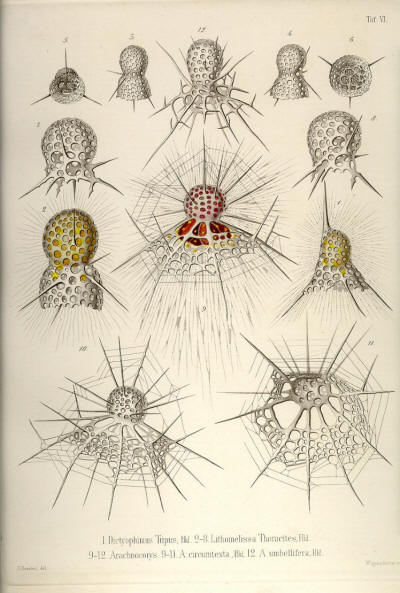|
|
|
February 2005 from Sheldrake Website
In the hypothesis of formative causation, discussed in detail in my
books
A New Science of Life and
The Presence of the Past, I propose
that memory is inherent in nature. Most of the so-called laws of
nature are more like habits.
As Francis Huxley has pointed out, Darwin’s most famous
book could more appropriately have been entitled The Origin of
Habits.
Over the course of fifteen years of research on plant development, I came to the conclusion that for understanding the development of plants, their morphogenesis, genes and gene products are not enough. Morphogenesis also depends on organizing fields.
The same arguments apply to the development of
animals. Since the 1920s many developmental biologists have proposed
that biological organization depends on fields, variously called
biological fields, or developmental fields, or positional fields, or
morphogenetic fields.
Some of these developmental switch genes, like the Hox
genes in fruit flies, worms, fish and mammals, are very similar. In
evolutionary terms, they are highly conserved. But switching on
genes such as these cannot in itself determine form, otherwise fruit
flies would not look different from us.
Just making the right proteins at the right times cannot explain the complex skeletons of such structures without many other forces coming into play, including the organizing activity of cell membranes and microtubules.
Most developmental biologists accept the need for a holistic or
integrative conception of living organization. Otherwise biology
will go on floundering, even drowning, in oceans of data, as yet
more genomes are sequenced, genes are cloned and proteins are
characterized.
I
propose that that they are transmitted from past members of the
species through a kind of non-local resonance, called
morphic
resonance.
This means that
new patterns of behavior can spread more rapidly than would
otherwise be possible. Foe example, if rats of a particular breed
learn a new trick in Harvard, then rats of that breed should be able
to learn the same trick faster all over the world, say in Edinburgh
and Melbourne. There is already evidence from laboratory experiments
(discussed in A NEW SCIENCE OF LIFE) that this actually happens.
Human societies have memories that are
transmitted through the culture of the group, and are most
explicitly communicated through the ritual re-enactment of a
founding story or myth, as in the Jewish Passover celebration, the
Christian Holy Communion and the American thanksgiving dinner,
through which the past become present through a kind of resonance
with those who have performed the same rituals before.
The habits of
nature depend on non-local similarity reinforcement. Through morphic
resonance, the patterns of activity in self-organizing systems are
influenced by similar patterns in the past, giving each species and
each kind of self-organizing system a collective memory.
We inherit bodily, emotional, mental and cultural habits, including
the habits of our languages.
They help provide an explanation for telepathy. There is now good evidence that many species of animals are telepathic, and telepathy seems to be a normal means of animal communication, as discussed in my book Dogs That Know When Their Owners Are Coming Home.
Telepathy is
normal not
paranormal, natural not supernatural,
and is also common between people, especially people who know each
other well.
Controlled experiments on telephone
telepathy have given repeatable positive results that are highly
significant statistically, as summarized in THE SENSE OF BEING
STARED AT and described in detailed technical papers which you can
read on this web site.
Telepathy also occurs in
connection with emails, and anyone who is interested can now test
how telepathic they are in
the online telepathy test.
(The concept of Akashic Records, term from Vedas representing the "library" of all the experiences and memories of human minds -souls- through their physical lifetime, can be related to morphic fields - Sheldrake, Rupert (1988) The Presence of the Past, Chapter 17).
We are already familiar with the idea of fields extending beyond the material objects in which they are rooted.
For example:
Likewise the fields of our minds extend far beyond our brains.
|


